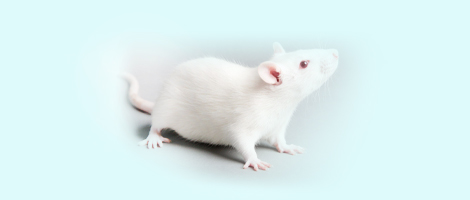













实验动物与比较医学 ›› 2025, Vol. 45 ›› Issue (2): 197-205.DOI: 10.12300/j.issn.1674-5817.2024.088
李倩1,2( ), 陈佳琦1,2,3(
), 陈佳琦1,2,3( ), 李丽红1,2, 张飞燕1,2, 毛华明3(
), 李丽红1,2, 张飞燕1,2, 毛华明3( ), 吕龙宝1,2(
), 吕龙宝1,2( )
)
收稿日期:2024-06-21
修回日期:2024-10-12
出版日期:2025-04-25
发布日期:2025-04-25
通讯作者:
吕龙宝(1974—),男,博士研究生,正高级工程师,研究方向:实验动物学。E-mail: lvlongbao@mail.kiz.ac.cn。ORCID:0000-0002-8437-6333;作者简介:李 倩(1986—),女,硕士,工程师,研究方向: 实验动物质量监测及营养管理。E-mail: liqian@mail.kiz.ac.cn。ORCID: 0009-0003-0980-6000;
陈佳琦(1987—),女,博士研究生,工程师,研究方向: 实验动物饲养管理、动物营养与饲料科学研究。E-mail: ynreddragonfly@126.com。ORCID: 0009-0004-8256-8579
基金资助:
LI Qian1,2( ), CHEN Jiaqi1,2,3(
), CHEN Jiaqi1,2,3( ), LI Lihong1,2, ZHANG Feiyan1,2, MAO Huaming3(
), LI Lihong1,2, ZHANG Feiyan1,2, MAO Huaming3( ), LÜ Longbao1,2(
), LÜ Longbao1,2( )
)
Received:2024-06-21
Revised:2024-10-12
Published:2025-04-25
Online:2025-04-25
Contact:
LÜ Longbao (ORCID: 0000-0002-8437-6333), E-mail: lvlongbao@mail.kiz.ac.cn;摘要:
非人灵长类因其与人类在遗传学和生理学上的高度相似性,成为生命科学研究和生物医药开发的关键性实验动物,不仅为神经系统疾病和传染病的机制研究提供理想平台,还被广泛用于大分子药物的临床前安全性评估,被誉为“金标准”。然而,这种生物学相似性也导致从业人员因接触非人灵长类实验动物或其组织、体液而面临较高的人兽共患病传播风险。结合近年来国内外人兽共患病暴发情况及国家生物安全法颁布实施的背景,本文综述了非人灵长类实验动物从业人员面临的职业风险因素(包括生物因素、化学因素、物理因素)、常见的人兽共患病及其病原体分类、传播途径、危害程度,以及从业人员职业危害暴露的处理方式,进而提出建立多维防控体系:(1)风险评估与应急处理,即通过职业健康安全委员会(Occupational Health and Safety Committee,OHSC)定期识别危险源,制定暴露后紧急处理流程 ;(2)管理体系优化,即完善设施设计、个人防护装备配置,并强化从业人员健康监护与疫苗接种 ;(3)技术培训与规范操作,即开展非人灵长类实验动物行为学、生物安全操作等专项培训,推广智能监控技术以减少攻击性事件等措施。本文旨在提高非人灵长类实验动物从业人员的健康安全意识,加强人员个人防护及专业技能操作的规范性指引,从而保障从业人员健康安全,降低职业暴露率,有效预防实验动物相关职业病。
中图分类号:
李倩,陈佳琦,李丽红,等. 浅谈非人灵长类实验动物从业人员的职业健康管理措施[J]. 实验动物与比较医学, 2025, 45(2): 197-205. DOI: 10.12300/j.issn.1674-5817.2024.088.
LI Qian,CHEN Jiaqi,LI Lihong,et al. Occupational Health Risk Management Measures for Personnel Handling Non-Human Primate Laboratory Animals: An Overview[J]. Laboratory Animal and Comparative Medicine, 2025, 45(2): 197-205. DOI: 10.12300/j.issn.1674-5817.2024.088.
病原体类型 Pathogens types | 病原体名称 Pathogen names | 非人灵长类动物 Non-human primates types | ||||
|---|---|---|---|---|---|---|
猕猴 Macaques | 狒狒 Baboons | 长尾猴 Guenons | 松鼠猴 Squirrel monkeys | 黑猩猩 Chimpanzees | ||
病毒 Viruses | 猴疱疹病毒/B病毒 | √ | √ | |||
| 猴D型逆转录病毒 | √ | |||||
| 猴免疫缺陷病毒 | √ | √ | √ | |||
| 猴T细胞趋向性病毒1型 | √ | |||||
| 猴泡沫病毒 | √ | √ | √ | |||
| 猴空泡病毒40 | √ | |||||
| 猴麻疹病毒 | √ | |||||
| 猴痘病毒 | √ | √ | √ | √ | ||
| 黄热病毒 | √ | √ | √ | √ | √ | |
| 登革病毒 | √ | √ | √ | √ | √ | |
| 埃博拉病毒 | √ | |||||
| 甲型肝炎病毒 | √ | |||||
| 传染性软疣病毒 | √ | |||||
| 乙型肝炎病毒 | √ | |||||
细菌 Bacteria | 类鼻疽伯克霍尔德菌 | √ | √ | |||
| 弯曲杆菌属 | √ | √ | √ | √ | √ | |
| 结核分枝杆菌 | √ | √ | √ | √ | √ | |
| 牛分枝杆菌 | √ | √ | √ | √ | √ | |
| 麻风分枝杆菌 | √ | √ | ||||
| 钩端螺旋体属 | √ | √ | √ | √ | √ | |
| 沙门菌属 | √ | √ | √ | √ | √ | |
| 志贺菌属 | √ | √ | √ | √ | √ | |
| 假结核耶尔森菌 | √ | √ | √ | √ | √ | |
| 小肠结肠炎耶尔森菌 | √ | √ | √ | √ | √ | |
后生动物寄生虫 Metazoan parasites | 微小膜壳绦虫 | √ | √ | √ | √ | |
| 结节线虫属 | √ | √ | √ | √ | ||
| 类圆线虫属 | √ | √ | ||||
| 鞭虫属 | √ | √ | √ | √ | √ | |
| 蠕形住肠线虫 | √ | √ | √ | |||
| 弓形虫属 | √ | |||||
| 疣状肠杆菌 | √ | |||||
原生动物寄生虫 Protozoan parasites | 结肠小袋纤毛虫 | √ | √ | √ | √ | √ |
| 隐孢子虫属 | √ | √ | √ | √ | √ | |
| 溶组织内阿米巴 | √ | √ | √ | √ | √ | |
| 肠贾第鞭毛虫 | √ | √ | √ | √ | √ | |
| 疟原虫 | √ | √ | √ | √ | √ | |
| 克氏锥虫 | √ | |||||
表1 NHPs相关的人兽共患病病原体
Table 1 Zoonotic pathogens associated with NHPs
病原体类型 Pathogens types | 病原体名称 Pathogen names | 非人灵长类动物 Non-human primates types | ||||
|---|---|---|---|---|---|---|
猕猴 Macaques | 狒狒 Baboons | 长尾猴 Guenons | 松鼠猴 Squirrel monkeys | 黑猩猩 Chimpanzees | ||
病毒 Viruses | 猴疱疹病毒/B病毒 | √ | √ | |||
| 猴D型逆转录病毒 | √ | |||||
| 猴免疫缺陷病毒 | √ | √ | √ | |||
| 猴T细胞趋向性病毒1型 | √ | |||||
| 猴泡沫病毒 | √ | √ | √ | |||
| 猴空泡病毒40 | √ | |||||
| 猴麻疹病毒 | √ | |||||
| 猴痘病毒 | √ | √ | √ | √ | ||
| 黄热病毒 | √ | √ | √ | √ | √ | |
| 登革病毒 | √ | √ | √ | √ | √ | |
| 埃博拉病毒 | √ | |||||
| 甲型肝炎病毒 | √ | |||||
| 传染性软疣病毒 | √ | |||||
| 乙型肝炎病毒 | √ | |||||
细菌 Bacteria | 类鼻疽伯克霍尔德菌 | √ | √ | |||
| 弯曲杆菌属 | √ | √ | √ | √ | √ | |
| 结核分枝杆菌 | √ | √ | √ | √ | √ | |
| 牛分枝杆菌 | √ | √ | √ | √ | √ | |
| 麻风分枝杆菌 | √ | √ | ||||
| 钩端螺旋体属 | √ | √ | √ | √ | √ | |
| 沙门菌属 | √ | √ | √ | √ | √ | |
| 志贺菌属 | √ | √ | √ | √ | √ | |
| 假结核耶尔森菌 | √ | √ | √ | √ | √ | |
| 小肠结肠炎耶尔森菌 | √ | √ | √ | √ | √ | |
后生动物寄生虫 Metazoan parasites | 微小膜壳绦虫 | √ | √ | √ | √ | |
| 结节线虫属 | √ | √ | √ | √ | ||
| 类圆线虫属 | √ | √ | ||||
| 鞭虫属 | √ | √ | √ | √ | √ | |
| 蠕形住肠线虫 | √ | √ | √ | |||
| 弓形虫属 | √ | |||||
| 疣状肠杆菌 | √ | |||||
原生动物寄生虫 Protozoan parasites | 结肠小袋纤毛虫 | √ | √ | √ | √ | √ |
| 隐孢子虫属 | √ | √ | √ | √ | √ | |
| 溶组织内阿米巴 | √ | √ | √ | √ | √ | |
| 肠贾第鞭毛虫 | √ | √ | √ | √ | √ | |
| 疟原虫 | √ | √ | √ | √ | √ | |
| 克氏锥虫 | √ | |||||
疾病名称 Disease names | 病原体名称 Pathogen names | 危害程度分类* Hazard classifications * | 传播途径 Transmission routes | 人体临床症状 Human clinical symptoms |
|---|---|---|---|---|
猴B病毒感染 Simian B virus infection | 猴疱疹病毒/B病毒 | 第一类 | 咬伤、抓伤、黏膜暴露 | 伤口部位疱疹样病变、神经症状、脑炎。死亡率达70%~80%[ |
猴痘病毒感染 Monkeypox virus infection | 猴痘病毒 | 第一类 | 呼吸道、直接接触[ | 临床表现类似天花,但病情相对较轻,发热、全身不适及淋巴结肿大 [ |
埃博拉出血热 Ebola hemorrhagic fever | 埃博拉病毒 | 第一类 | 直接接触动物分泌物或体液污染物 | 发热、呕吐、腹泻、出血。死亡率为69%~88%[ |
黄热病 Yellow fever | 黄热病毒 | 第一类 | 蚊虫叮咬、传染性物质接触皮肤表面伤口、针头刺伤 | 部分呈隐性感染;发热、头痛、黄疸、出血、死亡[ |
猴免疫缺陷病毒感染 Simian immunodeficiency virus infection | 猴免疫缺陷病毒 | 第二类 | 传染性物质接触黏膜、皮肤表面伤口、针头刺伤 | 已知的感染病例中未观察到临床症状[ |
狂犬病 Rabies | 狂犬病毒 | 第二类 | 咬伤、抓伤或舔舐 | 发热、疲劳、抽搐,死亡率近100%[ |
麻疹 Measles | 麻疹病毒 | 第三类 | 呼吸道、直接接触 | 发热、上呼吸道炎症、眼结膜炎、皮肤斑丘疹和颊黏膜有麻疹黏膜斑,疹退后遗留色素沉着伴糠麸样脱屑,可继发多种并发症[ |
登革热 Dengue fever | 登革病毒 | 第三类 | 蚊虫叮咬、针头刺伤 | 发热、皮疹、登革休克综合征、偶有死亡[ |
结核病 Tuberculosis | 结核分枝杆菌 | 第二类 | 呼吸道、消化道或破损的皮肤 | 可侵入人体全身各种器官,主要侵犯肺脏,属于慢性消耗性疾病[ |
沙门氏菌病 Salmonellosis | 沙门菌属 | 第三类 | 接触动物分泌物或粪便、黏膜接触或皮肤破损感染 | 胃肠炎(水样腹泻、腹痛、发热),病程2~7 d;少数发展为败血症或局部化脓感染[ |
志贺氏菌病 Shigellosis | 志贺菌属 | 第三类 | 接触动物分泌物或粪便、黏膜接触或皮肤破损感染 | 血性腹泻、黏液脓血便、腹痛及里急后重,可伴高热(38~40 ℃)[ |
疟疾 Malaria | 疟原虫 | 无 | 蚊虫叮咬、针头刺伤 | 周期性规律发作,全身发冷、发热、多汗,长期多次发作后可引起贫血和脾肿大[ |
阿米巴痢疾 Amebic dysentery | 溶组织内阿米巴 | 无 | 消化道 | 腹部不适、腹泻、大便有腐败腥臭味、肝脓肿等[ |
表2 人兽共患病的传播途径及人员感染症状
Table 2 Transmission routes of zoonotic diseases and symptoms in infected humans
疾病名称 Disease names | 病原体名称 Pathogen names | 危害程度分类* Hazard classifications * | 传播途径 Transmission routes | 人体临床症状 Human clinical symptoms |
|---|---|---|---|---|
猴B病毒感染 Simian B virus infection | 猴疱疹病毒/B病毒 | 第一类 | 咬伤、抓伤、黏膜暴露 | 伤口部位疱疹样病变、神经症状、脑炎。死亡率达70%~80%[ |
猴痘病毒感染 Monkeypox virus infection | 猴痘病毒 | 第一类 | 呼吸道、直接接触[ | 临床表现类似天花,但病情相对较轻,发热、全身不适及淋巴结肿大 [ |
埃博拉出血热 Ebola hemorrhagic fever | 埃博拉病毒 | 第一类 | 直接接触动物分泌物或体液污染物 | 发热、呕吐、腹泻、出血。死亡率为69%~88%[ |
黄热病 Yellow fever | 黄热病毒 | 第一类 | 蚊虫叮咬、传染性物质接触皮肤表面伤口、针头刺伤 | 部分呈隐性感染;发热、头痛、黄疸、出血、死亡[ |
猴免疫缺陷病毒感染 Simian immunodeficiency virus infection | 猴免疫缺陷病毒 | 第二类 | 传染性物质接触黏膜、皮肤表面伤口、针头刺伤 | 已知的感染病例中未观察到临床症状[ |
狂犬病 Rabies | 狂犬病毒 | 第二类 | 咬伤、抓伤或舔舐 | 发热、疲劳、抽搐,死亡率近100%[ |
麻疹 Measles | 麻疹病毒 | 第三类 | 呼吸道、直接接触 | 发热、上呼吸道炎症、眼结膜炎、皮肤斑丘疹和颊黏膜有麻疹黏膜斑,疹退后遗留色素沉着伴糠麸样脱屑,可继发多种并发症[ |
登革热 Dengue fever | 登革病毒 | 第三类 | 蚊虫叮咬、针头刺伤 | 发热、皮疹、登革休克综合征、偶有死亡[ |
结核病 Tuberculosis | 结核分枝杆菌 | 第二类 | 呼吸道、消化道或破损的皮肤 | 可侵入人体全身各种器官,主要侵犯肺脏,属于慢性消耗性疾病[ |
沙门氏菌病 Salmonellosis | 沙门菌属 | 第三类 | 接触动物分泌物或粪便、黏膜接触或皮肤破损感染 | 胃肠炎(水样腹泻、腹痛、发热),病程2~7 d;少数发展为败血症或局部化脓感染[ |
志贺氏菌病 Shigellosis | 志贺菌属 | 第三类 | 接触动物分泌物或粪便、黏膜接触或皮肤破损感染 | 血性腹泻、黏液脓血便、腹痛及里急后重,可伴高热(38~40 ℃)[ |
疟疾 Malaria | 疟原虫 | 无 | 蚊虫叮咬、针头刺伤 | 周期性规律发作,全身发冷、发热、多汗,长期多次发作后可引起贫血和脾肿大[ |
阿米巴痢疾 Amebic dysentery | 溶组织内阿米巴 | 无 | 消化道 | 腹部不适、腹泻、大便有腐败腥臭味、肝脓肿等[ |
| 1 | GAO H, HAMP T, EDE J, et al. The landscape of tolerated genetic variation in humans and primates[J]. Science, 2023, 380(6648):eabn8153. DOI: 10.1126/science.abn8197 . |
| 2 | ZHANG S, XU N, FU L, et al. Integrated analysis of the complete sequence of a macaque genome[J/OL]. Nature, 2025(2025-02-26)[2025-03-30]. https://pubmed.ncbi.nlm.nih.gov/40011769/. DOI: 10.1038/s41586-025-08596-w. |
| 3 | FRIEDMAN H, ATOR N, HAIGWOOD N, et al. The critical role of nonhuman Primates in medical research[J]. Pathog Immun, 2017, 2(3):352-365. DOI: 10.20411/pai.v2i3.186 . |
| 4 | ZHANG X L, PANG W, HU X T, et al. Experimental Primates and non-human primate (NHPs) models of human diseases in China: current status and progress[J]. Dongwuxue Yanjiu, 2014, 35(6):447-464. DOI: 10.13918/j.issn.2095-8137.2014.6.447 . |
| 5 | OBERNIER J A. Occupational health and safety in the care and use of nonhuman primates: an ILAR report[J]. Contemp Top Lab Anim Sci, 2004, 43(3):64, 66, 68. |
| 6 | 国家质量监督检验检疫总局, 中国国家标准化管理委员会. 实验动物 动物实验通用要求: GB/T 35823—2018[S]. 北京: 中国标准出版社, 2018. |
| General Administration of Quality Supervision, Inspection and Quarantine; China National Standardization Administration. Laboratory animals-General requirements for animal experiment: GB/T 35823-2018[S]. Beijing: Standards Press of China, 2018. | |
| 7 | FERRAZ E, ARRUDA L K, BAGATIN E, et al. Laboratory animals and respiratory allergies: the prevalence of allergies among laboratory animal workers and the need for prophylaxis[J]. Clinics (Sao Paulo), 2013, 68(6):750-759. DOI: 10.6061/clinics/2013(06)05 . |
| 8 | BURGOS-RODRIGUEZ A G. Zoonotic diseases of Primates[J]. Vet Clin North Am Exot Anim Pract, 2011, 14(3):557-575. DOI: 10.1016/j.cvex.2011.05.006 . |
| 9 | ACTON D, MCCAULEY L. Laboratory animal allergy: an occupational hazard[J]. AAOHN J, 2007, 55(6):241-244. DOI:10.1177/216507990705500604 . |
| 10 | BUSH R K. Mechanism and epidemiology of laboratory animal allergy[J]. ILAR J, 2001, 42(1):4-11. DOI: 10.1093/ilar.42.1.4 . |
| 11 | JONES M. Laboratory animal allergy in the modern era[J]. Curr Allergy Asthma Rep, 2015, 15(12):73. DOI: 10.1007/s11882-015-0575-4 . |
| 12 | MUZEMBO B A, EITOKU M, INAOKA Y, et al. Prevalence of occupational allergy in medical researchers exposed to laboratory animals[J]. Ind Health, 2014, 52(3):256-261. DOI: 10.2486/indhealth.2012-0155 . |
| 13 | ACTON D, MCCAULEY L. Laboratory animal allergy: an occupational hazard[J]. AAOHN J, 2007, 55(6):241-244. DOI: 10.1177/216507990705500604 . |
| 14 | D'OVIDIO M C, WIRZ A, ZENNARO D, et al. Biological occupational allergy: Protein microarray for the study of laboratory animal allergy (LAA)[J]. AIMS Public Health, 2018, 5(4):352-365. DOI: 10.3934/publichealth.2018.4.352 . |
| 15 | 中华人民共和国国家卫生健康委员会. 人间传染的病原微生物目录[EB/OL]. (2023-08-28) [2024-10-03]. http://www.nhc.gov.cn/qjjys/s7948/202308/b6b51d792d394fbea175e4c8094dc87e.shtml. |
| National Health Commission of the People's Republic of China. List of pathogenic microorganisms transmitted among humans[EB/OL]. (2023-08-28) [2024-10-03]. http://www. nhc.gov.cn/qjjys/s7948/202308/b6b51d792d394fbea175e4c80 94dc87e.shtml. | |
| 16 | EBERLE R, JONES-ENGEL L. Questioning the extreme neurovirulence of monkey B virus [J]. Adv Virol, 2018, 2018:5248420. DOI: 10.1155/2018/5248420 . |
| 17 | HUFF J L, BARRY P A. B-virus (cercopithecine herpesvirus 1) infection in humans and macaques: potential for zoonotic disease[J]. Emerg Infect Dis, 2003, 9(2):246-250. DOI: 10.3201/eid0902.020272 . |
| 18 | ELMORE D, EBERLE R. Monkey B virus (Cercopithecine herpesvirus 1)[J]. Comp Med, 2008, 58(1):11-21. |
| 19 | WANG W L, QI W J, LIU J Y, et al. First human infection case of monkey B virus identified in China, 2021[J]. China CDC Wkly, 2021, 3(29):632-633. DOI: 10.46234/ccdcw2021.154 . |
| 20 | KRUG P W, SCHINAZI R F, HILLIARD J K. Inhibition of B virus (Macacine herpesvirus 1) by conventional and experimental antiviral compounds[J]. Antimicrob Agents Chemother, 2010, 54(1):452-459. DOI: 10.1128/AAC.01435-08 . |
| 21 | ALTINDIS M, PUCA E, SHAPO L. Diagnosis of monkeypox virus - an overview[J]. Travel Med Infect Dis, 2022, 50:102459. DOI: 10.1016/j.tmaid.2022.102459 . |
| 22 | GONG Q Z, WANG C L, CHUAI X, et al. Monkeypox virus: a re-emergent threat to humans[J]. Virol Sin, 2022, 37(4):477-482. DOI: 10.1016/j.virs.2022.07.006 . |
| 23 | MARTÍNEZ-FERNÁNDEZ D E, FERNÁNDEZ-QUEZADA D, CASILLAS-MUÑOZ F A G, et al. Human monkeypox: a comprehensive overview of epidemiology, pathogenesis, diagnosis, treatment, and prevention strategies[J]. Pathogens, 2023, 12(7):947. DOI: 10.3390/pathogens12070947 . |
| 24 | NIEMUTH N A, FALLACARA D, TRIPLETT C A, et al. Natural history of disease in monkeys exposed to Ebola virus Kikwit strain demonstrates the reliability of this non-human primate model for Ebola virus disease[J]. PLoS One, 2021, 16(7): e0252874. DOI: 10.1371/journal.pone.0252874 . |
| 25 | LETAFATI A, SALAHI ARDEKANI O, KARAMI H, et al. Ebola virus disease: a narrative review[J]. Microb Pathog, 2023, 181:106213. DOI: 10.1016/j.micpath.2023.106213 |
| 26 | JIANG X, FAN Z, LI S,et al. A Review on Zoonotic Pathogens Associated with Non-Human Primates: Understanding the Potential Threats to Humans[J]. Microorganisms, 2023, 11(2):246. DOI:10.3390/microorganisms11020246 . |
| 27 | DOGADOV D I, KYUREGYAN K K, GONCHARENKO A M, et al. Measles in non-human Primates[J]. J Med Primatol, 2023, 52(2):135-143. DOI: 10.1111/jmp.12630 . |
| 28 | KLASSEN-FISCHER M K, NELSON A M, NEAFIE R C, et al. The reemergence of measles[J]. Am J Clin Pathol, 2023, 159(1):81-88. DOI: 10.1093/ajcp/aqac124 . |
| 29 | ISLAM M R, DHAR P S, RAHMAN M M. Recent measles (rubeola) outbreak: etiology, symptoms, prevention, treatment, complications, and advice for medical professionals[J]. Int J Surg, 2023, 109(2):123-125. DOI: 10.1097/JS9.0000000000000053 . |
| 30 | MOSS W J. Measles[J]. Lancet, 2017, 390(10111):2490-2502. DOI: 10.1016/S0140-6736(17)31463-0 . |
| 31 | PEÑA J C, HO W Z. Non-human primate models of tuberculosis[J]. Microbiol Spectr, 2016, 4(4): 1-13. DOI: 10.1128/microbiolspec.tbtb2-0007-2016 . |
| 32 | SANCHEZ C R, HIDALGO-HERMOSO E. Mycobacterium tuberculosis sensu stricto in African apes, what is its true health impact?[J]. Pathogens, 2022, 11(5):484. DOI: 10.3390/pathogens11050484 . |
| 33 | KOCK R, MICHEL A L, YEBOAH-MANU D, et al. Zoonotic tuberculosis - the changing landscape[J]. Int J Infect Dis, 2021, 113(Suppl 1): S68-S72. DOI: 10.1016/j.ijid.2021.02.091. |
| 34 | BESPIATYKH D, BESPYATYKH J, MOKROUSOV I, et al. A comprehensive map of tuberculosis complex regions of difference[J]. mSphere, 2021, 6(4): e0053521. DOI: 10.1128/mSphere.00535-21 . |
| 35 | YEE J L, PRONGAY K, VAN ROMPAY K K A, et al. Tuberculosis detection in nonhuman primates is enhanced by use of testing algorithms that include an interferon-γ release assay[J]. Am J Vet Res, 2021, 83(1):15-22. DOI: 10.2460/ajvr. 21.08.0124 . |
| 36 | ZHOU Z J, VAN HOOIJ A, VERVENNE R, et al. Quantitative rapid test for detection and monitoring of active pulmonary tuberculosis in nonhuman primates[J]. Biology (Basel), 2021, 10(12):1260. DOI: 10.3390/biology10121260 . |
| 37 | VOINSON M, NUNN C L, GOLDBERG A. Primate malarias as a model for cross-species parasite transmission[J]. eLife, 2022, 11: e69628. DOI: 10.7554/eLife.69628 . |
| 38 | GALINSKI M R. Systems biology of malaria explored with nonhuman Primates[J]. Malar J, 2022, 21(1):177. DOI: 10.1186/s12936-022-04199-2 . |
| 39 | 张朝阳, 袁玲. 兽医人员职业暴露与防护情况调查[J]. 中国动物检疫, 2016, 33(4):50-52. DOI:10.3969/j.issn.1005 -944X.2016.04.017 . |
| ZHANG C Y, YUAN L. Survey on occupational exposure and protection of veterinary staff[J]. China Anim Health Insp, 2016, 33(4):50-52. DOI: 10.3969/j.issn.1005-944X.2016.04.017 . | |
| 40 | COHEN J I, DAVENPORT D S, STEWART J A, et al. Recommendations for prevention of and therapy for exposure to B virus (cercopithecine herpesvirus 1)[J]. Clin Infect Dis, 2002,35(10):1191-1203. DOI: 10.1086/344754 . |
| 41 | GOODLY L J, JARRELL V L, MILLER M A, et al. Developing a comprehensive animal care occupational health and safety program at a land-grant institution[J]. J Am Assoc Lab Anim Sci, 2016, 55(1):50-57. |
| 42 | NATIONAL RESEARCH COUNCIL. Guide for the care and use of laboratory animals[M]. 8th ed. Washington: National Academies Press, 2011. DOI: 10.17226/12910 .. |
| 43 | 中国合格评定国家认可委员会. 2018实验动物饲养和使用机构质量和能力认可准则: CNAS-CL06[S/OL]. (2019-02-25)[2024-10-03]. https://www.cnas.org.cn/rkgf/sysrk/jbrkzz/art/2024/art_36c19cf167d9428d966d8f8f606d8e79.html. |
| China National Accreditation Service for Conformity Assessment. 2018 accreditation criteria for the quality and competence of laboratory animal institutions for care and using: CNAS-CL06[S/OL]. (2019-02-25)[2024-10-03]. https:// www.cnas.org.cn/rkgf/sysrk/jbrkzz/art/2024/art_36c19cf167d9 428d966d8f8f606d8e79.html. | |
| 44 | 宋志刚, 刘芳, 任晓楠, 等. 实验动物从业人员环境健康安全管理体系中生物安全培训的重要性[J]. 中国比较医学杂志, 2018, 28(8):7-10, 6. DOI: 10.3969/j.issn.1671-7856.2018.08.002 . |
| SONG Z G, LIU F, REN X N, et al. Importance of biosafety training in EHS management system for laboratory animal practitioners[J]. Chin J Comp Med, 2018, 28(8):7-10, 6. DOI: 10.3969/j.issn.1671-7856.2018.08.002 . | |
| 45 | 国家市场监督管理总局, 国家标准化管理委员会. 实验动物 动物实验生物安全通用要求: GB/T 43051—2023[S]. 北京: 中国标准出版社, 2023. |
| State Administration for Market Regulation, Standardization Administration of the People's Republic of China. Laboratory animal—General requirements for biosafety in animal experiment: GB/T 43051-2023[S]. Beijing: Standards Press of China, 2023. | |
| 46 | MAASKANT A, JANSSEN I, WOUTERS I M, et al. Assessment of indoor air quality for group-housed macaques (Macaca spp.)[J]. Animals, 2022, 12(14):1750. DOI: 10.3390/ani12141750 . |
| [1] | 张倩, 邓青秀, 蔡林. 国内普通高校实验动物从业人员职业健康风险防控概述[J]. 实验动物与比较医学, 2025, 45(2): 206-213. |
| [2] | 许超, 孙秋芳, 邵奇鸣. 实验动物机构职业健康档案建立内容及要点[J]. 实验动物与比较医学, 2025, 45(2): 214-220. |
| [3] | 蔡梦诗, 苏醒, 邵奇鸣. 实验动物机构建设项目职业健康防护设施“三同时”的实施要求[J]. 实验动物与比较医学, 2025, 45(2): 221-228. |
| [4] | 邵奇鸣, 卞勇, 施爱民. 实验动物机构职业健康安全管理体系建设要点[J]. 实验动物与比较医学, 2025, 45(2): 188-196. |
| [5] | 侯冬霞, 铁祚庥, 陆勇, 南盼盼, 鲍洁. 实验动物屏障环境设施安全准入体系建设的探索与实践——以南京大学仙林校区为例[J]. 实验动物与比较医学, 2025, 45(1): 96-100. |
| [6] | 刘美佟, 陈长, 张兆强, 范荻, 胡旃, 马海玲. 湖南省实验动物生物安全突发事件应急预案的编制说明[J]. 实验动物与比较医学, 2024, 44(3): 328-334. |
| [7] | 刘美佟, 陈长, 张兆强, 范荻, 胡旃, 马海玲. 湖南省实验动物机构生物安全管理现状调查[J]. 实验动物与比较医学, 2024, 44(2): 202-208. |
| [8] | 郑秀青, 邵志强, 宋婧, 张越华, 苏金华. 高校ABSL-2实验室流程管理的实践探讨:以厦门大学为例[J]. 实验动物与比较医学, 2022, 42(4): 364-370. |
| [9] | 苏世博, 马文杰, 王伟, 郭慧娟, 张贺, 王梓, 康雷, 刘守琦, 刘怀然, 司昌德, 苟春天, 张伟, 陈洪岩. 自主研发生物安全型换笼工作台的性能检测与评价[J]. 实验动物与比较医学, 2022, 42(2): 102-110. |
| [10] | 马文杰, 张伟, 王伟, 苏世博, 郭慧娟, 张贺, 王梓, 刘怀然, 陈洪岩. 部分兽医相关单位Ⅱ级生物安全柜的性能测试与分析[J]. 实验动物与比较医学, 2022, 42(2): 111-116. |
| [11] | 李勇, 周亮, 何勇, 闫志峰, 王海江. 实验动物尸体及相关废弃物无害化处置信息化监管系统初探[J]. 实验动物与比较医学, 2022, 42(2): 122-126. |
| [12] | 陈丽香, 秦波音, 杨华, 徐春华, 彭秀华, 李顺, 周晓辉. 实验动物身份识别与追踪技术在生物安全实验室的应用前景[J]. 实验动物与比较医学, 2022, 42(2): 89-94. |
| [13] | 杨玉琴. 实验动物屏障设施管理中面临的生物安全问题及对策探讨[J]. 实验动物与比较医学, 2022, 42(2): 95-101. |
| [14] | 陈晓娟, 李巍, 汪洌. 高校实验动物管理流程信息化探索:以浙江大学为例[J]. 实验动物与比较医学, 2021, 41(6): 554-558. |
| [15] | 罗银珠, 闵凡贵, 王静, 何丽芳, 潘金春. 病原微生物防控在实验动物设施管理与生物安全控制中的作用探讨[J]. 实验动物与比较医学, 2021, 41(5): 443-449. |
| 阅读次数 | ||||||
|
全文 |
|
|||||
|
摘要 |
|
|||||